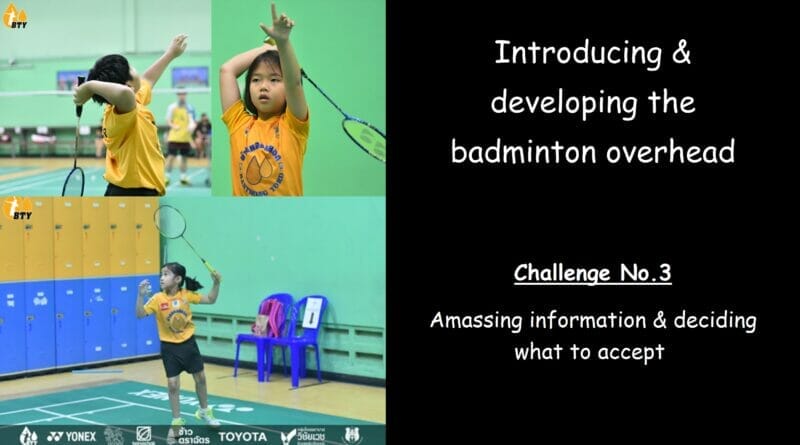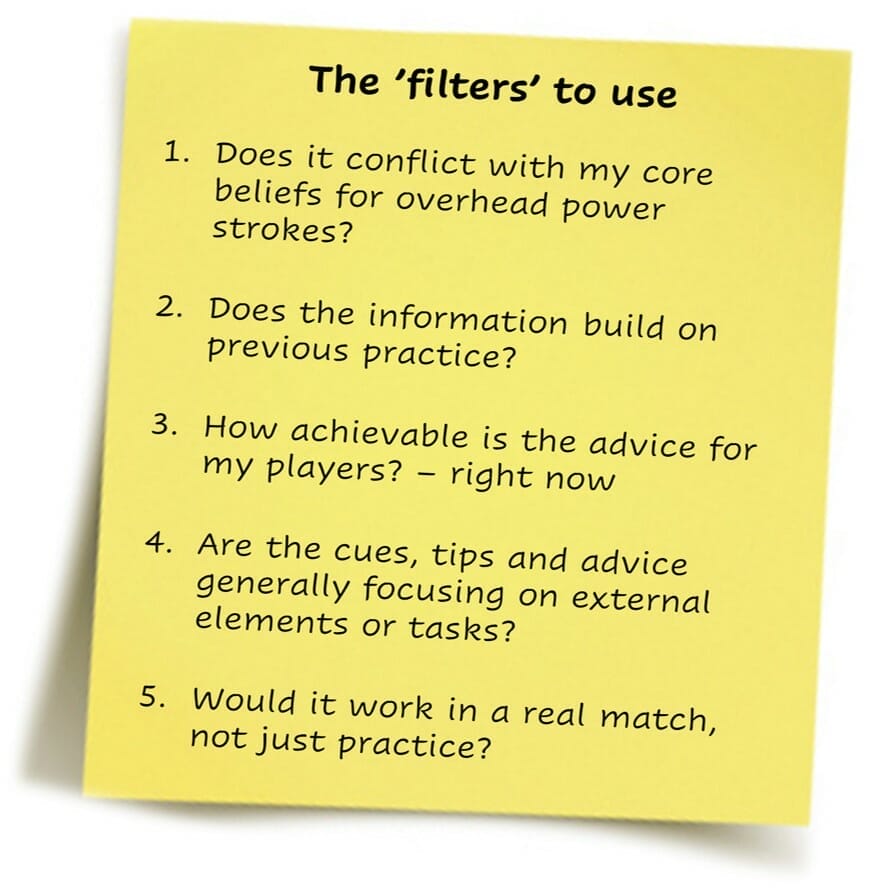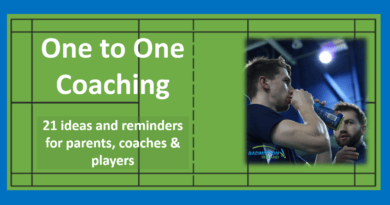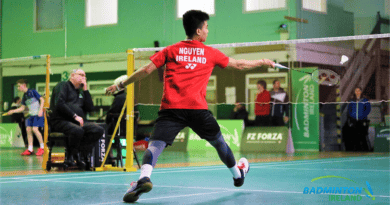Introducing the badminton overhead – Challenge No. 3
What you do with all the information you acquire is critical
There is so much available on how to play and coach the overhead forehand
But how do you decide what will work for you and your players?
As coaches gain experience they will acquire lots of information
How it’s filtered is the difference between it being just interesting or highly effective
This post examines where you can access this information, the filters you can apply, and crucially how to determine if it will be effective for you and your players. The information will focus specifically on working with young players who are new to the badminton overhead forehand.
I’m always in search of that magic coaching cue or practice make will make the difference between a great overhead throw or a pan-handle push!
Does it exist, if you have some advice please let me know
My aim is to give you ideas to help make learning a little easier and to create more smiles than struggles in your coaching sessions. I’ve also listed some of the useful and strange information that I’ve read over the years.
It’s up to you to decide if you agree or want to start shouting at the ideas suggested 🙂
What’s the best advice that you’ve ever been given to help novice players wither their overhead forehand?
– – – – – – – – – – – – – – – –
Some background information

If you haven’t read the introductory post I recommend you click here or this image.
It outlines 5 challenges coaches face and why I believe that this movement also attracts the most coaching problems. Maybe even more than an overhead backhand.
There is also an insight into what happened when I spoke with 2 other coaches about these challenges and how at times, we disagreed!
I’ve outlined some of the thoughts we had during our conversation.
– – – – – – – – – – – – – – – – – –
Information & deciding what to do with it!
So much information
Is having information enough?
Try these thoughts to assess what information will work best
Useful and strange information
I hope to prickle your thoughts and beliefs
– – – – – – – – – – – – – – – –
So much information
I’m certainly an avid collector of information! Everyone I’ve met is able to give you advice or ‘great’ practice to try. Information that they believe is essential for developing an overhead forehand.
Your biggest challenge may not be to find information, but to find information that is useful to you and your players. Plus you need a system (a filter) or critical friends against which to test your thoughts.
I’d recommend that you use a variety of resources. Here are some of my favourite sources, if you know of others then please let me know.
- Badminton Youtube channels
- BWF Shuttletime
- Your Coaching friends (the critical ones)
- Badmintonandy.com
Badminton Youtube channels
 My favourite YouTubers includes the people at Badminton Insight, TheBadmintonFamily and TobiasWadenka.
My favourite YouTubers includes the people at Badminton Insight, TheBadmintonFamily and TobiasWadenka.
They all certainly provide plenty of great advice, so study them hard and you will find value in their content. You will be happy that you’ve found them, I certainly was 🙂
– Badminton Family : Badminton clear biomechanics (5 easy tips)
– Badminton Insight : Forehand Clear Tutorial
– Tobia Wadenka : Smash and Clear Tutorial
BWF Shuttletime
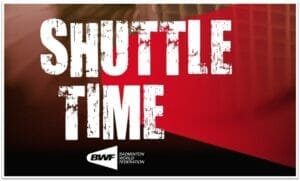 This is one of the best resources for coaches and teachers of beginner players. Easy to watch, short length videos with plenty of cues to follow.
This is one of the best resources for coaches and teachers of beginner players. Easy to watch, short length videos with plenty of cues to follow.
– Throwing Game With Scissor Jump
Your Coaching friends (the critical ones)
Your friends have the capability to be the most informative of all the sources.
However, it all depends on how committed and open you are to building your network of coaching contacts. I know through experience that it’s challenging in all sorts of ways.
When was the last time you spoke with or went on the court with another coach with the specific aim of swapping ideas or discussing something that intrigued you both? In order to discover different efficient ways of introducing the overhead forehand you will have to talk with other others.
The window of opportunity for the introduction of the overhead forehand to a beginner player is quite small. I’d argue that some form of technique (good, limited or problematic) will be forming within 6 – 10 lessons. Therefore gaining coaching experience in this area is challenging for the coach working alone.
Be aware that if players are not guided and are left to ‘discover’ their own techniques for overhead hitting technical limiting can easily form and be hard to change. So ‘stand-off’ coaching is not recommended.
You need to work deliberately and with a number of varied (and proven) coaching strategies. This can be hard to establish when you are new to coaching.
However, if you ask 3 of your coaching friends (do you have that many?) you may be able to shortcut the process and all exchange ideas.
I recommend that you identify 2-3 critical friends with a wide range of experiences. Is that possible where you live?
Is it probably the least used of all the sources of information available to you?
Badmintonandy.com
 This is of course is a plea from me to you to read this series of posts and the others linked to them 🙂
This is of course is a plea from me to you to read this series of posts and the others linked to them 🙂
Apart from this mini-series, I recommend that you read these two, if you haven’t already.
They offer an alternative approach to overhead forehand coaching and will, I promise, lay the foundation for overhead development. However, it’s up to you to decide and maybe to let me know your thoughts.
– The Deep Forehand : a Coaches guide
– The Deep Forehand : why it’s so important
– – – – – – – – – – – – – – – –
Is having information enough?
This is where I begin to feel uncertain. It’s certainly possible to amass information, the ideas above are just a small amount of what’s available. Plus everyone has an opinion.
But is information enough?
Maybe deciding what to do with it is even more important
However, just repeating what others have done or that you’ve seen is no guarantee of success or effective coaching. Of course, it’s easy to do and I guess we’ve all done it. Discovering a new video then start copying and repeating it in your next coaching session.
However, all the information you see can’t be correct, can it?
Certainly, some will be generic and apply in lots of situations. Other advice will be very specific and only apply to a certain moment in development or at a specific situation on the court. This is your problem, knowing When & Why to apply to what you’ve just found or been told.
Everything that you see, hear or are told can’t all be that magic bullet of a practice, coaching cue or instruction.
I have a bag full of these nearly perfect ‘magic bullets’ and only some work some of the time 🙂
You may even experiment and create ‘new’ ways of coaching the overhead forehand. However, don’t become part of your own problem or that of others. Be careful what you advise.
Below I’ve listed some questions that you could ask about information to see, hear or maybe create yourself. These will act as filters to ensure that what you are left with is useable and effective to help players develop overhead forehands.
How do you filter the information you have, as it’s a critical component to increasing your knowledge
– – – – – – – – – – – – – – – –
Try these filters
Often it’s difficult to decide what information is effective and worth trying
especially about how to introduce the overhead to beginner players
Some information you find will be effective, some occasionally useful and plenty that comes under the heading of ‘interesting but not effective’. It’s highly unlikely that there is one magic instruction or practice – but assess each and try them out with a sceptical mindset.
Your task is to find a set of principles that will guide you in the introduction and early development of the badminton overhead.
I recommend that you try things out on court and see what results appear, or don’t. Also, read the other challenges and see if your ‘new’ information reduced the challenges identified.
Try these thoughts to assess what information is best for you
- Identify the core aspects to be established in all overheads for novice players (try to do this right now, write a list!) and then compare them to the information you’ve found. Are there similarities or differences? Here are my 5 core elements, are yours similar?
- Does the information build on previous practice, or give you hints at what needs to be partly established with the player before introducing the advice?
- How achievable is the practice for your players right now? It needs to be at least 60% achievable – challenging but not impossible.
- Can you see the results of the advice in good players of a similar (playing and training) age that were novice players say only 2 years ago? Certainly not World-class players, just better than the beginner in front of you.
- Are the cues, tips and advice generally focusing on external elements or tasks? It’s ok to focus on starting and ending positions but not on those elements that happen in the middle of the power stroke.
Acquiring coaching information is important
It’s deciding when to use it, that is critical!
– – – – – – – – – – – – – – – –
Useful and strange information – which do you agree with?
Here are some examples of the information I’ve heard over the years that is intended to help beginner (novice) players develop a badminton overhead.
I don’t agree with all of them 🙂
It’s up to you to work out if they fall into the useful (I’ll try that), interesting (I’ll think more about that), or strange (I certainly won’t be doing or saying that!) categories!
Maybe you have found yourself saying or doing some of these. If you have, has your opinion changed over the years and would you still recommend them to your ‘critical friends’ ?
Consider these when specifically working with beginners – I don’t agree with all of them 🙂
- Start with below shoulder strokes before doing overheads
- Throw the shuttle onto the player’s racket so they experience striking overhead – initially, the technique isn’t that important
- Stand players under a basketball net and ask them to jump and throw to encourage a fast throw and body rotation
- Reduce all big swings and follow through’s as they won’t help
- Develop the deep forehand style action sometimes using self-feeding and hitting against the wall
- Draw on the player’s hand (1) elbow(2) hand (3) so they can slow motion the hitting action whilst calling out the numbers
- Use a shuttle on a long pole and ask players to jump and hit it
- Throw balls or shuttles over the net or at a wall with near-maximum power
– – – – – – – – – – – – – – – –
I hope to prickle your thoughts and beliefs 🙂
My desire is that you will consider the discussion points and information here, I hope you have time to do that.
The ideas and suggestions listed here are my best advice at this time. It’s up to you to decide what to take, use, and maybe reject.
Please do not assume that every statement or bullet point listed is essential or has an equal weighting. Some are ‘could haves’ and others are essential ‘must haves’
You will acquire lots of information about the badminton overhead forehand as there certainly isn’t a shortage of people stating the technical elements they believe need to be included – me included 🙂
Do you agree that there isn’t as much information about when or how to practice with players starting out developing an overhead forehand?
Why don’t you become that’s someone who helps other coaches with the information they need?
Write a post, I will publish it for you 🙂
What will you take from this information?
What would your advice be to other coaches?

